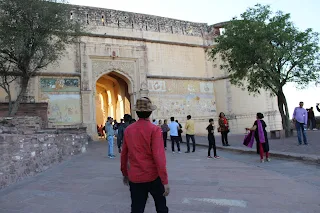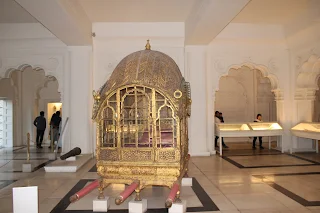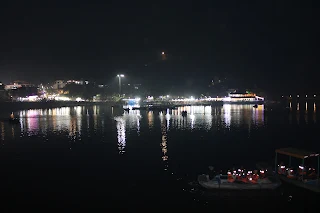Setting Goals in Life
Goal
setting is very important not only for an organization but also for an
individual. Setting goals in life helps in developing a roadmap to fulfil dreams
during various stages of life. You may wonder why I am discussing about goal
settings in life during various stages of life when we senior citizens are in
the last phase of life. What is its utility to senior citizens? If any senior
citizen is thinking like that, he is not wrong since at this stage we cannot
set our goals retrospectively. During this phase of life, we have a lot of old
memories related to both achievements and failures in life. No doubt, one feels
pleasure in cherishing old memories of pleasant moments and experiences of
successes in life, but it is very difficult to cherish memories of failures in
life. Many senior citizens repent for their failures in past. But instead of
repenting, it is better to learn lessons from past failures which will be
helpful in giving proper guidance to the upcoming generation for achieving
their goals and fulfilment of their dreams.
2. For achieving dream, one need to do the
followings.
(i)
Setting Goals
(ii)
Developing Strategies to achieve Goals
(iii)
Taking initiatives and actions based on
strategies
(iv)
Review of actions taken
2.1 Setting
Goals: Setting Goal is the first and foremost step for the achievement of dream.
Goals in life differ during various phases of life. During student life a person is mostly having
academic goal and near the end of student life one may have professional goal
in addition to academic goal. During working life, a person is mostly having professional
and financial goals. During initial stage of working life, one may have a goal
to settle in life and to have a family. After the completion of working life
when a person enters into post-retirement life, goals are totally different due
to drastic change in lifestyle and priorities after retirement. During
post-retirement life focus is more on stability and therefore a person’s
financial goal is mostly to have consistent flow of passive income so as to
take care of one’s daily needs, medical expenditure and leisure travels by
making proper placement of retirement corpus in various financial instruments.
Peace of mind with sound health become priority at this stage. I am not going
into the details of goal settings for which I may have to write a separate
article. Goals should be SMART i.e.,
specific, measurable, achievable, relevant and time bound.
2.2
Developing Strategies to achieve Goals: Once a goal is set there
is a need to develop strategies to achieve the goal. Before developing strategies,
one should set the timeline for the achievement of goal, and it should be
achievable within the timeline. While developing strategies one should take the
stock of available resources which includes available information, tools and
other material resources required for the achievement of goal. Once you know
the resources required for the achievement of goal, you can ascertain the
resources gap to be fulfilled. Strategy includes the following steps.
(i) Identification
of resources required for the achievement of goal.
(ii) Ascertaining
the resources gap to be fulfilled.
(iii) Developing
action points to fill the resources gap.
(iv) Developing
various milestones in a chronological order for the achievement of goal.
(v) Creating
action points for the achievement of each and every milestone with deadlines.
2.3 Taking initiatives
and actions based on strategies
This
is the most important steps without which the first two steps will become useless.
Even after having a noble goal with robust strategies, one may not achieve any
success if there is a lack of initiatives and actions. It is very important to
take initiative i.e., the first step and subsequent actions based on strategies.
Action should be appropriate for achieving each and every milestone within the
deadline. After achieving the first milestone one need to initiate action for
moving towards the next milestone.
2.4 Review of actions
taken
It
is very important to review the actions after reaching every milestone. If you
are not able to reach the milestone before targeted date or sure that your
action is not taking you near the targeted date, then you should review your
actions and find out the most appropriate way to reach the targeted date. Even
after reaching the first milestone within the targeted date, one should review
the actions taken for reaching the first milestone. On similar way review of actions
should be made for each and every milestone. Review of your actions helps in
finding out the most appropriate way to reach the milestone and in achieving
your goal. It also helps in identifying irrelevant steps which can be removed
for facilitating achievement of goal in a smooth manner within the targeted
date.
3.
Types of Goals
Goals
are of various types based on its importance and tenure of achievement.
Strategies for achieving goals may not be the same for every goal and may
differ for each goal based on its type and nature. One need to prioritize the
goals to be achieved as it may not be possible to work on the strategies for all
the goals simultaneously.
3.1
Types of Goals based on importance
Based
on its importance, goals are of three types.
(i) The Most
Important Goal
(ii) Important
Goal
(iii) Least
Important Goal
Based
on the degree of importance one need to prioritize the goals. The most
important goal should always be on one’s top priority. But it does not mean
that one should not focus on the least important goal. One need to develop the
strategies for the achievement of each and every goal, but action should be first
initiated for the most important goal and more efforts should be made for its
achievement. Not necessarily your lifetime goal may be the most important goal
during each and every phase of your life. For example, at the age of 25 years one
may have a dream to have a farmhouse and accordingly a goal has been set to
have it within the next 15 years. But to have a job for livelihood is also a
goal that gains importance over long term goal of having farmhouse because without
livelihood it may not be possible to have a dream farmhouse. Accordingly, one
need to prioritize one’s goal. Many times, achievement of one’s long- term goal
depends on the achievement of short-term goal.
3.2
Types of Goals based on tenure
Based
on time required for the achievement of goals, we may categorize the goals into
three types.
(i) Short Term
Goals
(ii) Medium Term
Goals
(iii) Long Term
Goals
A
short-term goal requires a time span of one to two years for its achievement. A
medium-term goal requires three to five years whereas a long-term goal takes at
least 10 years for its achievement. These time periods are flexible. Persons of
young and middle age groups can have the scope for short term, medium term and
long-term goals. Whereas persons in old age group have very little scope for
long term goals.
4.
Goal Setting during post-retirement life
Setting
of goals in life is not only important during earlier phases of life but is
also important during post-retirement life though there is a very little scope
for setting long-term goals during this phase of life. One can have mostly
short-term goals and rarely mid-term goals during this phase of life. Pursuing
hobbies, planning for travel, having celebrations, planning events, etc., maybe
one’s goal during this phase of life. Still there are possibilities of
achieving unfulfilled dream during this phase of life.
5.
Evaluating reasons for failures in achieving goals during past
On
recapitulation of old memories, one may have complete picture of both
achievement and non-achievement of goals set during earlier phases of life. No
doubt one will have pleasure in cherishing the memories related to goals
successfully achieved in life but is equally important to analyze the reasons
for failure in achieving certain goals in life.
On introspection, one may come to know the reasons for non-achievement
of goals. Instead of blaming others it is better to own the responsibility for
failures in past. In most cases the main reason for failure is lack of
commitment and focus. Due to lack of commitment, a person fails to develop the
strategies for achieving goal and many times lose focus on goal. In case of
particularly long-term goal, tendency to lose focus is more due to intermittent
distractions which may be due to events and incidents happening in between.
Most of the events and incidents are not in our control, but the only thing
that is in our control is our response and reactions towards such events and
incidents. Incidents and events are momentary in our life, but our response and
reaction are not momentary and carried for longer duration which leads to
distraction from our main goal. It is our responsibility to have control over
our reactions and not allowing it to be carried for longer period. Giving undue
importance to the opinions of other persons regarding our goal also lead to
distractions.
6.
Conclusion
Senior
Citizens have experiences of both successes and failures in life which may help
them to prepare learning points which will be helpful in providing guidance to
the upcoming generations for achievement of their goals successfully without
repeating the mistakes already done in the pasts.







































